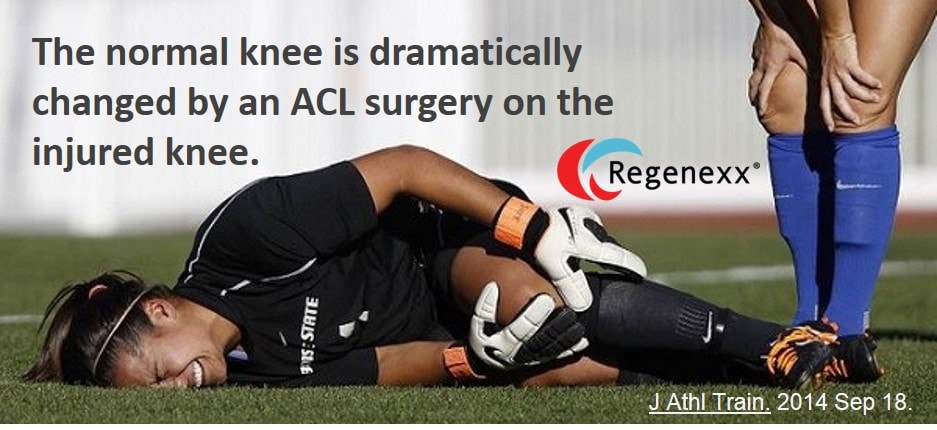Our existing ACL surgery rehab methods focus on returning patients to sports by strengthening and treating the operated knee. The rehab goal is to facilitate the two big reasons that patients who tear their ACL ligaments decide to get surgery: to return to sports at high levels and to prevent further damage to the knee. Despite that, multiple studies have now shown that neither of these is really happening in the same way patients believe. Now a new study adds more fuel to the debate over whether there’s any reason to get ACL surgery-changes in the bio mechanics of the normal knee may need as much rehab attention as the side that was surgically reconstructed.
First, ACL surgical reconstruction is performed hundreds of thousands of times a year in the United States. Despite this, we see countless walking wounded patients come in to our clinic with knee arthritis wanting stem cell treatments anywhere from 5 years to 20 years after their ACL reconstruction. Many are surprised, as they feel like they got the surgery to prevent problems in the knee.
I’ve blogged before that return to sport with an ACL reconstruction surgery isn’t necessarily all it’s cracked up to be. Now a new study adds more concern to that body of scientific literature by showing that our rehab focus may be on the wrong knee! In this study the researchers measured many parameters in ACL surgery patients when landing. As expected, the ACL operated leg didn’t perform like the other side. For example, as the patients who were less than 5 months out from their surgery landed, the surgical knee was flexed less, externally rotated, and moved inward farther. However, the most startling finding was that after 5 months post-surgery as the patient’s operated knee tried to return to normal, the other knee became whacked out bio mechanically. On landing, the good knee flexed less and externally rotated more. Why? The ACL graft in the surgical knee isn’t at the same angle as the original ACL and doesn’t have any position sense. In addition, this adaption on the other side likely explains why 20% of athletes will injure the opposite “good” side in the first 2 years after an ACL surgery.
One of the most disheartening things we see in the clinic is young people who had ACL surgeries when they were teenagers come in to clinic in their twenties with arthritis. In fact, in one recent study 2/3’rds of teens who get ACL surgery have arthritis by age 30. We’ve also known for sometime that ACL reconstructed knees are never the same. This new study adds to that knowledge by showing the serious impacts the surgery also has on the normal knee. While this new information may change how we rehab both the ACL reconstructed and normal knee, it begs a bigger question. Why are we operating on all of the ACLs?
See Original Post Here: http://www.regenexx.com/2014/09/acl-surgery-rehab-2/

